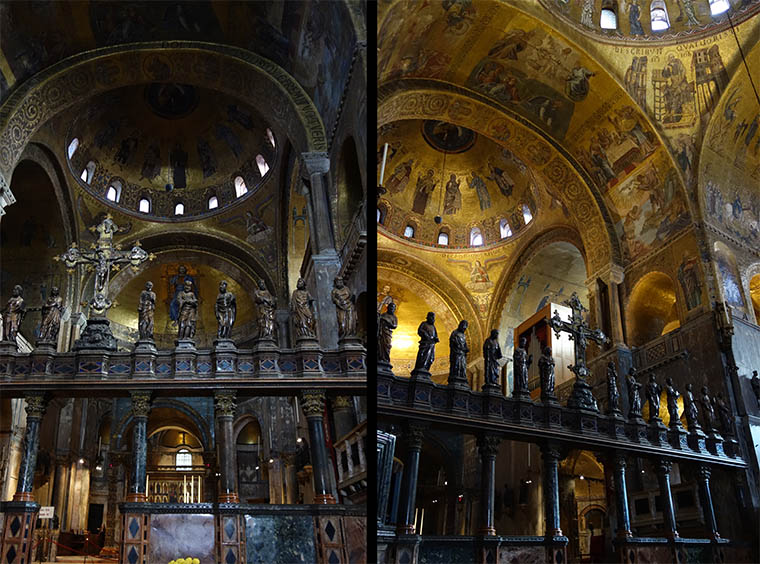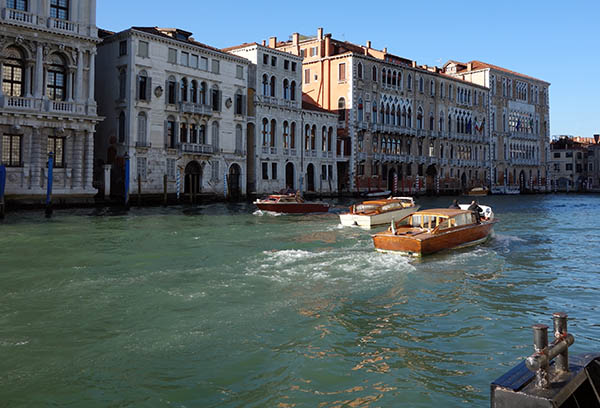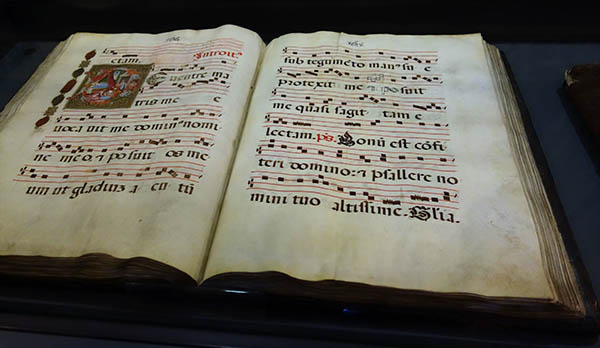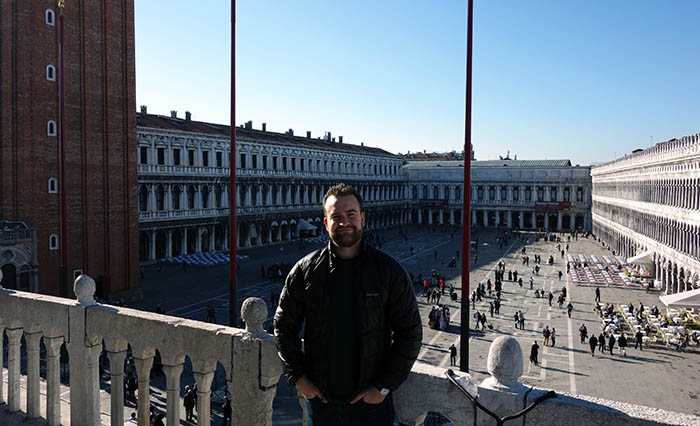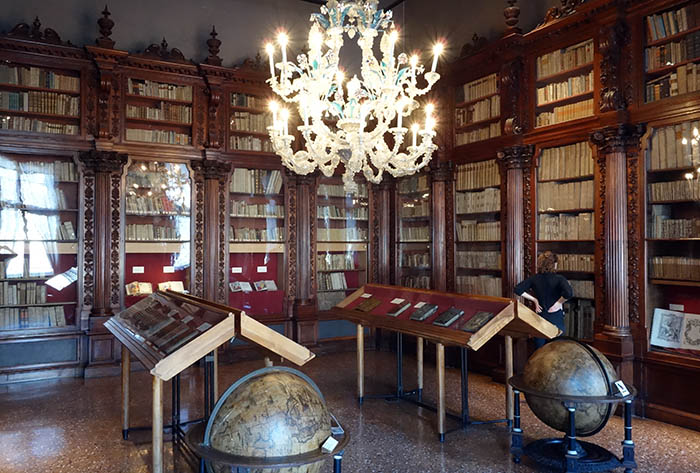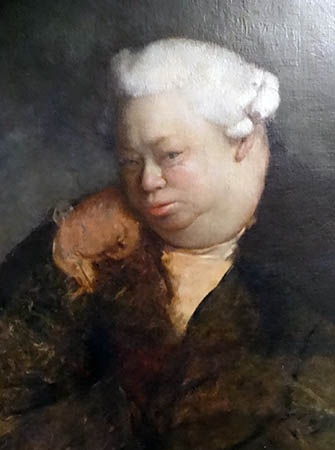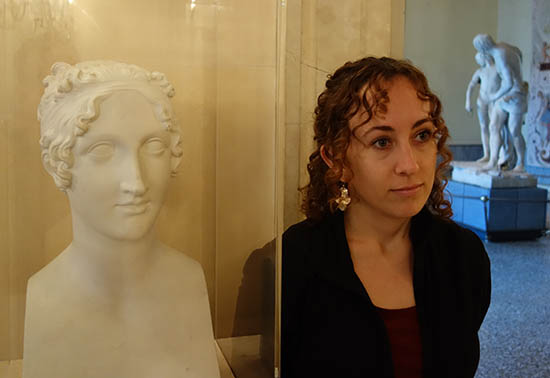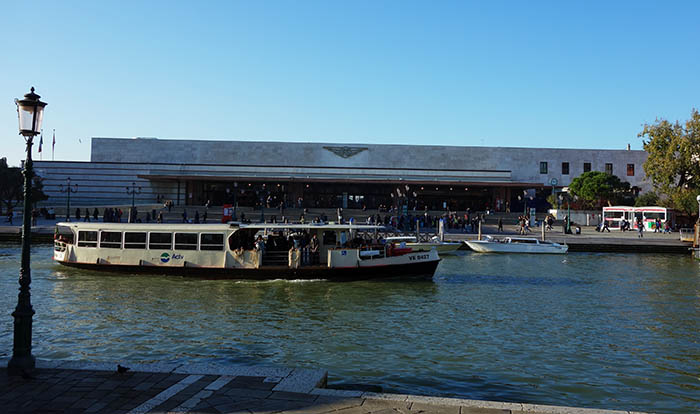We were leaving Venice in the afternoon of November 19, but before we left, there was still a lot to see. On the agenda for the day was another visit to Basilica San Marco, the Frari Church, and another ramble through twisted Venetian streets.
We’d visited the Basilica briefly for a quick tour. But frankly, it’s tough to get a feel for these large buildings. Of course, you can appreciate the scale and the artwork, or just contemplate the space. But on the other hand, they can feel impersonal. So, we decided to return with an audioguide. We used Rick Steves. I remember watching Rick Steves on PBS as a kid, and enjoying his travel shows. Hardly extreme, and Rick seems perfectly tailored to appeal to middle-aged women. But he’s also smart and a diligent guide, and can have a cheesy sense of humor. We’d use him for other tours as well.
We also wanted to check out the Basilica’s museum. Among other things, the museum shows artifacts associated with the museum, provides a great view of the Basilica and the Piazza, and has some very special horses. After heading up some steep stairs, the museum opens up and looks over the main nave of the church. This area was the only area, until recently, where women were allowed to sit for services. We made our way around the upper corridors, which ring the building. It’s very interesting to get an up-close view of all the mosaic tiles – much more impressive than from the ground; it was easier to appreciate the scale. The museum also shows tapestries, books and samples of sheet music (as well as a few incongruous modern art pieces).
Far and away the highlight, for me, was the set of four gorgeous bronze horses. These horses are of unknown origin. They probably date from around 300 BC, but nobody knows for sure. For a long time they stood above the Hippodrome in Constantinople. When the Venetians sacked the city in 1204, they carried them off and put them on top the Basilica, where they remained for almost 600 years. Then Napoleon briefly brought them to Paris, where they were used to design the Arc de Triomphe. After Waterloo, they were returned to Venice. Now they reside in the museum (replicas are outside).
If you’ll excuse the digression, the horses spur a romantic or nostalgic feeling in me. They’re real treasures, but even more beautiful than their physical appearance is what they represent. When the Venetians sacked Constantinople in 1204, they didn’t do it along: they were accompanied by Franks. The Venetians stole jewels and beautiful artistic works. The Franks destroyed things and melted them down. Constantinople, before the sack, was the jewel of the world, notably beautiful, cosmopolitan and splendid. Afterwards, its treasuries empty, its slow decline accelerated. Unable to pay for its wars or defense, it rapidly collapsed into a single nigh-impregnable city before finally being conquered by the Ottomans in 1453.
Looking at the horses, I felt a connection with the vast disappeared riches of antiquity. When these cosmopolitan cities were conquered, their treasures were destroyed or looted, and with them, an irretrievable part of western culture. So it was with Constantinople, and so it was with Alexandria, Knossos, Carthage and Rome itself. Now we only see scattered fragments.
After the horses, we went out to the balcony for a great view of Piazza San Marco and the Doge’s Palace next door.
Along another side of the Piazza was the Correr museum. This gallery is filled with Venetian artwork and artifacts, as well as fairly large collection of Roman artifacts.
One notable work here was the famous Fra Mauro map. This map, created in 1450 by the monk Fra Mauro, contains the total geographic knowledge of Europeans at the time. The perspective is peculiar, but Italy is plainly visible, as well as Africa, Saudi Arabia, and the rest of Eurasia. It gets increasingly distorted the further you get from Europe. The best part of this map is the tiny annotations and descriptions of each area. The map itself is large, probably about 7 feet by 7 feet, and it dominates the room in which it stands. We’d actually get a closer look at a replica a few days later in Florence. And after the trip, I received a copy of the map as a gift, so I can also see it on the wall of my apartment!
We ended up doing a pretty quick run through the Correr, being a bit museumed out by this point. Then we took a ferry across the grand canal to make a stop at the Frari Church on the way to the train station. This was actually one of my favorite churches in Italy. The architecture is nice, but there’s a lot of miscellany around the church that’s interesting. Of particular interest are the tombs of Titian, the famous painter, and Canova, the great sculptor. In fact, Canova’s tomb is quite peculiar. The tomb, a huge pyramid, is more laudatory than evena normal tomb, and it was designed by Canova himself – but for Titian (for whom it was never used). After Canova died, his disciples used the design for his own tomb. But here’s the thing: his body isn’t even buried in the tomb. His heart was removed and placed in an urn inside; it’s the only thing in the enormous edifice (his body is buried in his hometown). I wasn’t allowed to take pictures in the church, unfortunately.
After the Frari Church, we stopped nearby to get some really excellent gelato. Given that the church is a well-known tourist site, the gelato was awful cheap (~2.50 EUR).
We did some more wandering before ending up at the train station. We rested on the other side of the canal, before heading in to grab tickets to Florence.
